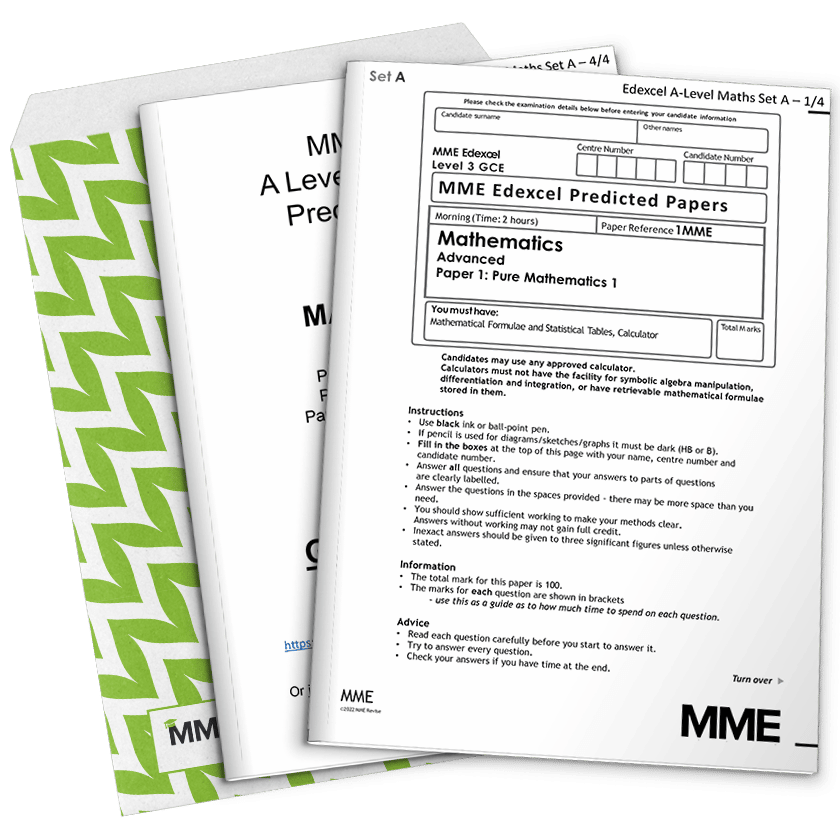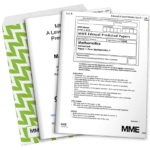Trig Identities and Approximations
Trig Identities and Approximations Revision
Trig Identities and Approximations
From our first identity \textcolor{blue}{\sin ^2 \theta} + \textcolor{limegreen}{\cos ^2 \theta} \equiv 1, we have two new identities.
Make sure you are happy with the following topics before continuing.
Two New Identities
So, we started out in the Basic Trig Identities section by forming the identity \textcolor{blue}{\sin ^2 \theta} + \textcolor{limegreen}{\cos ^2 \theta} \equiv 1. From there, we can derive two new ones.
Identity 1:
\dfrac{\textcolor{blue}{\sin ^2 \theta} + \textcolor{limegreen}{\cos ^2 \theta} \equiv 1}{\textcolor{blue}{\sin ^2 \theta}}
gives
\dfrac{\textcolor{blue}{\sin ^2 \theta}}{\textcolor{blue}{\sin ^2 \theta}} + \dfrac{\textcolor{limegreen}{\cos ^2 \theta}}{\textcolor{blue}{\sin ^2 \theta}} \equiv \dfrac{1}{\textcolor{blue}{\sin ^2 \theta}}
or,
1 + \cot ^2 \theta \equiv \cosec ^2 \theta
Identity 2:
\dfrac{\textcolor{blue}{\sin ^2 \theta} + \textcolor{limegreen}{\cos ^2 \theta} \equiv 1}{\textcolor{limegreen}{\cos ^2 \theta}}
gives
\dfrac{\textcolor{blue}{\sin ^2 \theta}}{\textcolor{limegreen}{\cos ^2 \theta}} + \dfrac{\textcolor{limegreen}{\cos ^2 \theta}}{\textcolor{limegreen}{\cos ^2 \theta}} \equiv \dfrac{1}{\textcolor{limegreen}{\cos ^2 \theta}}
or,
\textcolor{red}{\tan ^2 \theta} + 1 \equiv \sec ^2 \theta
Small Angle Approximations
We also have approximations for \textcolor{blue}{\sin \theta}, \textcolor{limegreen}{\cos \theta} and \textcolor{red}{\tan \theta} is small (i.e. smaller than 1, in radians):
\textcolor{blue}{\sin \theta} \approx \theta
\textcolor{limegreen}{\cos \theta} \approx 1 - \dfrac{1}{2}\theta ^2
\textcolor{red}{\tan \theta} \approx \theta
We can use these approximations to find rough values for complicated functions, in order to simplify them.
The expressions do extend to multiples of \theta, also, but only when the product is less than 1.
So, our expressions are:
\textcolor{blue}{\sin n\theta} \approx n\theta
\textcolor{limegreen}{\cos n\theta} \approx 1 - \dfrac{1}{2}(n\theta) ^2
\textcolor{red}{\tan n\theta} \approx n\theta
Example 1: Using Approximations
For small values of \theta, find an approximation for \dfrac{1}{2}\textcolor{blue}{\sin \theta} + 2 \textcolor{limegreen}{\cos \theta} - 2, and find any value of \theta where the expression is 0.
[3 marks]
The expression \dfrac{1}{2}\textcolor{blue}{\sin \theta} + 2 \textcolor{limegreen}{\cos \theta} - 2 can be replaced by our small angle approximations to
\dfrac{1}{2}\theta + 2 - \theta ^2 - 2
which can be simplified to
\dfrac{1}{2}\theta - \theta ^2
When this expression is equal to zero, we have \theta ^2 - \dfrac{1}{2}\theta = 0, which has roots \theta = 0, \dfrac{1}{2}.
Example 2: Using Identities
Solve 2\sec ^2 \theta = 1 + 3\textcolor{red}{\tan ^2 \theta} for all values -360° \leq x \leq 360°.
[3 marks]
First, we need to convert all trig functions to be of one form.
So,
2 + 2\textcolor{red}{\tan ^2 \theta} = 1 + 3\textcolor{red}{\tan ^2 \theta}
rearranges to
1 = \textcolor{red}{\tan ^2 \theta}
so,
\textcolor{red}{\tan \theta} = ±1
or,
\theta = -315°, -225°, -135°, -45°, 45°, 135°, 225°, 315°
Trig Identities and Approximations Example Questions
Question 1: Use small angle approximations to find a value for \cos \dfrac{\pi}{4}, the form a + b\pi ^2.
[2 marks]
So, \cos \dfrac{\pi}{4} = 1 - \left( \dfrac{1}{2} \times \dfrac{\pi ^2}{16}\right) = 1 - \dfrac{\pi ^2}{32}
Question 2: Find an approximation to \sin (3\theta ) + 2\cos \theta. Use your result to find an approximate value for \sin 0.6 + 2\cos 0.2.
What is the maximum value of \theta where the approximation is accurate?
[3 marks]
Using a value of \theta = 0.2, we have = 3\theta + 2 - \theta ^2 = (3 \times 0.2) + 2 - 0.2^2 = 0.6 + 2 - 0.04 = 2.56
The maximum value of \theta is \dfrac{1}{3}.
Question 3: Prove that \cosec ^2 \theta \equiv 1 + \cot ^2 \theta and \sec ^2 \theta = 1 + \tan ^2 \theta.
[4 marks]
\sin ^2 \theta + \cos ^2 \theta \equiv 1
so
\dfrac{\sin ^2 \theta}{\sin ^2 \theta} + \dfrac{\cos ^2 \theta}{\sin ^2 \theta} \equiv \dfrac{1}{\sin ^2 \theta}
meaning
\cosec ^2 \theta \equiv 1 + \cot ^2 \theta
\sin ^2 \theta + \cos ^2 \theta \equiv 1
so
\dfrac{\sin ^2 \theta}{\cos ^2 \theta} + \dfrac{\cos ^2 \theta}{\cos ^2 \theta} \equiv \dfrac{1}{\cos ^2 \theta}
meaning
\sec ^2 \theta \equiv 1 + \tan ^2 \theta
Question 4: Show that \tan ^4 \theta - \sec ^2 \theta = 5 can be written as \sec^4 \theta - 3\sec ^2 \theta - 4 = 0 and find its solutions for 0° \leq \theta \leq 360°.
[5 marks]
\tan ^4 \theta - \sec ^2 \theta = 5
(\sec ^2 \theta - 1)^2 - \sec ^2 \theta = 5
\sec ^4 \theta - 3\sec ^2 \theta - 4 = 0
Let x = \sec ^2 \theta.
Then we have
x^2 - 3x - 4 = 0
which has solutions x = -1, 4.
Since \sec ^2 \theta \neq -1, we have \sec ^2 \theta = 4, or \sec \theta = ±2.
\sec \theta = ±2 is equivalent to \cos \theta = ±\dfrac{1}{2}
So, we have
\theta = 60°, 120°, 240°, 300°
Trig Identities and Approximations Worksheet and Example Questions
Small Angle Approximations
A LevelYou May Also Like...

MME Learning Portal
Online exams, practice questions and revision videos for every GCSE level 9-1 topic! No fees, no trial period, just totally free access to the UK’s best GCSE maths revision platform.






